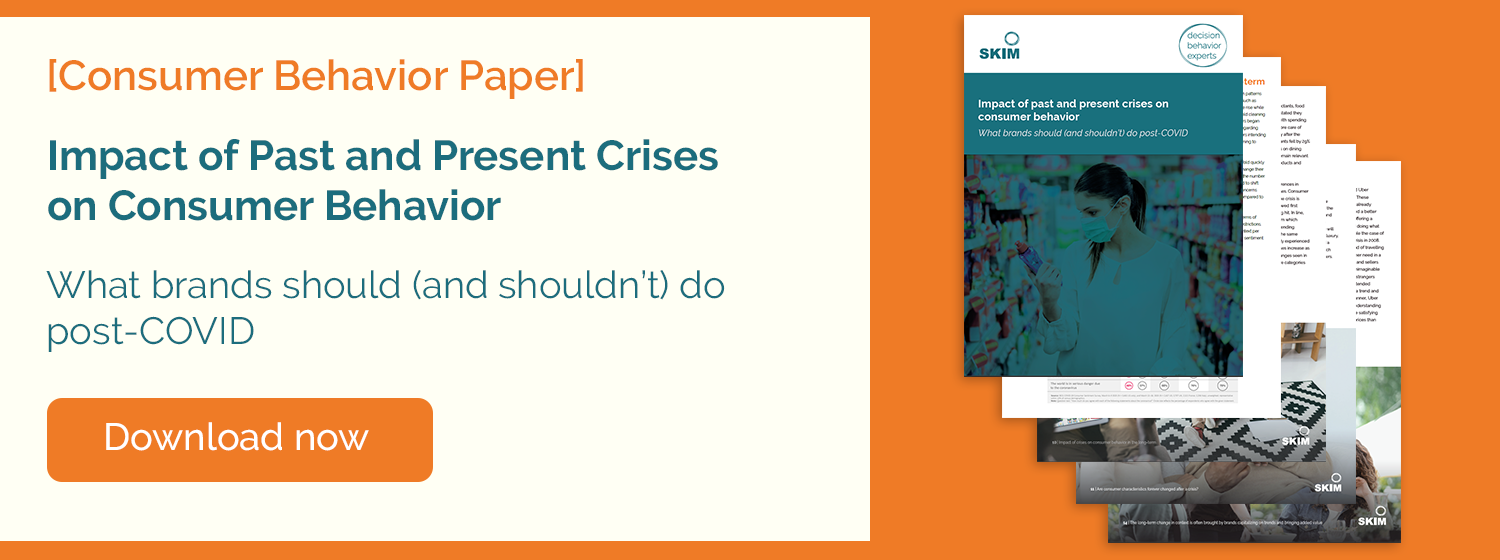Much has been written about social distancing and the immediate impact on marketing across industries. You have likely already adjusted your short-term communication strategies. However, as you map out your long-term plans, much can be learned from the concept of psychological distance as it relates to recent events.
In this article, our Senior Vice President of Brand Communication explores how psychological distance played out during the early stages of the COVID-19 global pandemic. Reflecting on why Western countries responded differently to the crisis than certain Asian countries, helps understand how human decision-making works. Read on to learn more about the theory and how it could relate to you as a professional and as a human.
Introduction
It was early March when I landed at New York JFK after a long travel from Singapore with a stopover in Seoul, an emerging hotbed of COVID-19. I was mentally ready for long lines at immigration as a result of increased controls, but to my surprise I was greeted with a simple “welcome back” and sped through the airport in record time. None of the airport staff and barely any of the passengers were wearing a face mask and there were no other precautions in place either. I had a similar experience in Amsterdam Airport Schiphol a week earlier and couldn’t help but be confused. I live in Asia, Singapore to be precise, and COVID-19 had already been top of mind for a while. Signs with instructions on how to lower contamination risk, temperature checks at office buildings, face masks, and hand sanitizer had quickly become the new norm.

Yet, Europe and America were going about their lives as if was just another day. And in their mind, it was just another day indeed. So how was this possible?
Psychological distance theory, which describes how far away an object, event, or person is from someone’s perception of reality, can help explain these differences. If distance is high, people are less likely to alter their behavior than when distance is low. The psychological distance gap between the people and the problem varied substantially in the early days of the pandemic, and as such their responses differed as well.
The reasons why this gap was so much wider in the West than in the East goes further than mere geographical proximity to the problem.
In fact, there are four types of psychological distance that all played a role in understanding why Western countries decided to act differently in the early stages of the unfolding pandemic.
1. Spatial Distance
The first one is the most obvious. China is thousands of miles away from Europe and the US, so why worry about something that is happening far, far away? It is so remote, it won’t affect us, was the first logical reaction. In some cases, this could be valid reasoning indeed, if it weren’t for the fact the world is so interconnected nowadays and viruses know no borders. The physical space between the people and the problem gave people in the West a false sense of safety that wasn’t based on any scientific facts, but on misleading perception.
2. Temporal Distance
In addition to space, distance in terms of time makes it hard for people to relate to the seriousness of the situation. If the consequence of an action isn’t immediate, it is hard for us to envision that consequence, and act upon it in the now. Think about how easy it is to skip that healthy snack or gym session because any positive or negative consequences of that decision won’t be felt right away. Future states are hard to relate to, and as a result often lead us to make poor decisions in the short-term.

For COVID-19, this was no different. It was incredibly difficult to see the need to implement strict social distancing measures and closures when the pain of the pending disaster hadn’t even arrived yet. In other words, a problem doesn’t exist until it is there. Our inability to truly imagine and experience future states can lead to inaction in the presence, with potentially catastrophic consequences as a result.
3. Hypothetical Distance
For most of us it is difficult to relate to any future state, especially when you or the people close to you have not experienced it before.
The more difficult to imagine the future state, the higher the hypothetical distance. And it is this that I believe is the most important reason for the differences in behavior.
Countries like Hong Kong, Taiwan, Singapore, and Vietnam were hit hard by earlier viral threats like SARS and MERS. While all the rest of the world saw the devastating scenes on the news, they experienced it firsthand. The moment COVID-19 started emerging in China, they immediately were able to imagine the pain that would follow if they wouldn’t act immediately and so they did, successfully containing the virus when they still could.
4. Social (Psychological) Distance
Social distance states that it is much harder to relate to individuals or groups of people that are different from you. These differences can be culturally, demographically, or socio-economically driven. Countries in the West associate themselves more easily with countries close to them than countries in the far East. They made themselves believe their economic power and advanced healthcare systems would shield them from the same woes China experienced, increasing the distance to the problem, and making it easier to brush it off. Another way social distance exacerbated the problem, was through the young people that initially flouted social distancing guidelines. The disease would only affect others, the elderly, so they did not feel a concrete threat and were less likely to obey as a result.
What this means for us
In hindsight it is always easy to say what decisions would have been best. Psychological distance theory, however, helps explain that making those decisions in the moment wasn’t as simple as that. People weren’t deliberately in denial, but it resulted from psychological processes that are deeply rooted in our human DNA. They simply didn’t act on time because they didn’t worry about a problem that was happening in a different place, to different people. A problem that didn’t manifest itself yet and most people had never experienced before. Unfortunately, a dangerous mix of misconception as we know now.
While analyzing COVID-19 in the context of psychological distance helps explain recent events, more than anything it tells a story about how human decision-making works. The same politicians and citizens that failed to respond to COVID-19 in a timely matter, are decision makers in other aspects of life. When making those decisions, the same psychological processes that decide on the outcome of those decisions are at play.

Understanding these processes offers a tangible way to improve communications for your brand or organization. How large is the gap between how you position yourself and the current reality of the people? To what extent does it bring to life what your customers are experiencing and looking for right now? Do generic messages of sympathy really get you closer to your customer? I’m not so sure.
More concrete reflections of current emotional and functional needs and a positive outlook on the future are probably closer to the desired states people are currently envisioning in their minds. Reducing the gap will help you drive more meaningful connections with your customers. Not only during these special times, but also further down the road when realities change, and your product, services and communications must be adjusted to reflect the desired experiences of those times.
While psychological distance theory has proven itself as a powerful tool for brands, more importantly in times like this, it can help us make much needed progress on broader societal issues.
For example, think of climate change and sustainability. Why is it so difficult for so many of us to make the right decisions here? Of course, there are some politicians that deliberately deny the issue for short-term economic and political gain, but most people have positive intentions. Yet, behavioral change is not happening at a fast-enough rate.

One key reason is that for most people the spatial, temporal, hypothetical and social distance towards environmental issues is substantial. Not only will most of the negative consequences of our decisions not be visible for a long time, those consequences are often difficult to imagine, and will most likely not as seriously affect the people charged with the leadership to make important decisions on the subject than many others. This means the problem stays intangible, resulting in complacency and a lack of action in the presence with severely negative consequences for the future.
For those organizations and people aiming to make a difference in this space, applying the concept of psychological distance can be very useful. By gearing their communications towards closing the gap between their audience and the problem, it will make the problem and the impact they can personally make more tangible, real and relatable. For example, the #trashtagchallenge was a great example of how we can reduce the gap between our behavior and the impact it has. By showing before and after photos of small sections of cleaned up nature, people suddenly started realizing they can make a tangible difference and sprung into action as a result.
The next article in this series will explore this in more detail and provide a clear set of guidelines on how to close the sustainability gap to spur people into action.
—
SKIM’s psychological distance framework can also help optimize your eCommerce strategies.  to learn how we applied this concept to help significantly improve click-through rates and sales on Singapore’s biggest online shopping platform.
to learn how we applied this concept to help significantly improve click-through rates and sales on Singapore’s biggest online shopping platform.
 Visit our COVID-19 and Decision Behavior Disruption knowledge center for more content in this series.
Visit our COVID-19 and Decision Behavior Disruption knowledge center for more content in this series.
We are sharing additional theories, best practices and tips on decision-making, eCommerce, innovation, and revenue management strategies. Our goal is to provide inspiration, answers to common questions we’re receiving and help you navigate the new normal.


